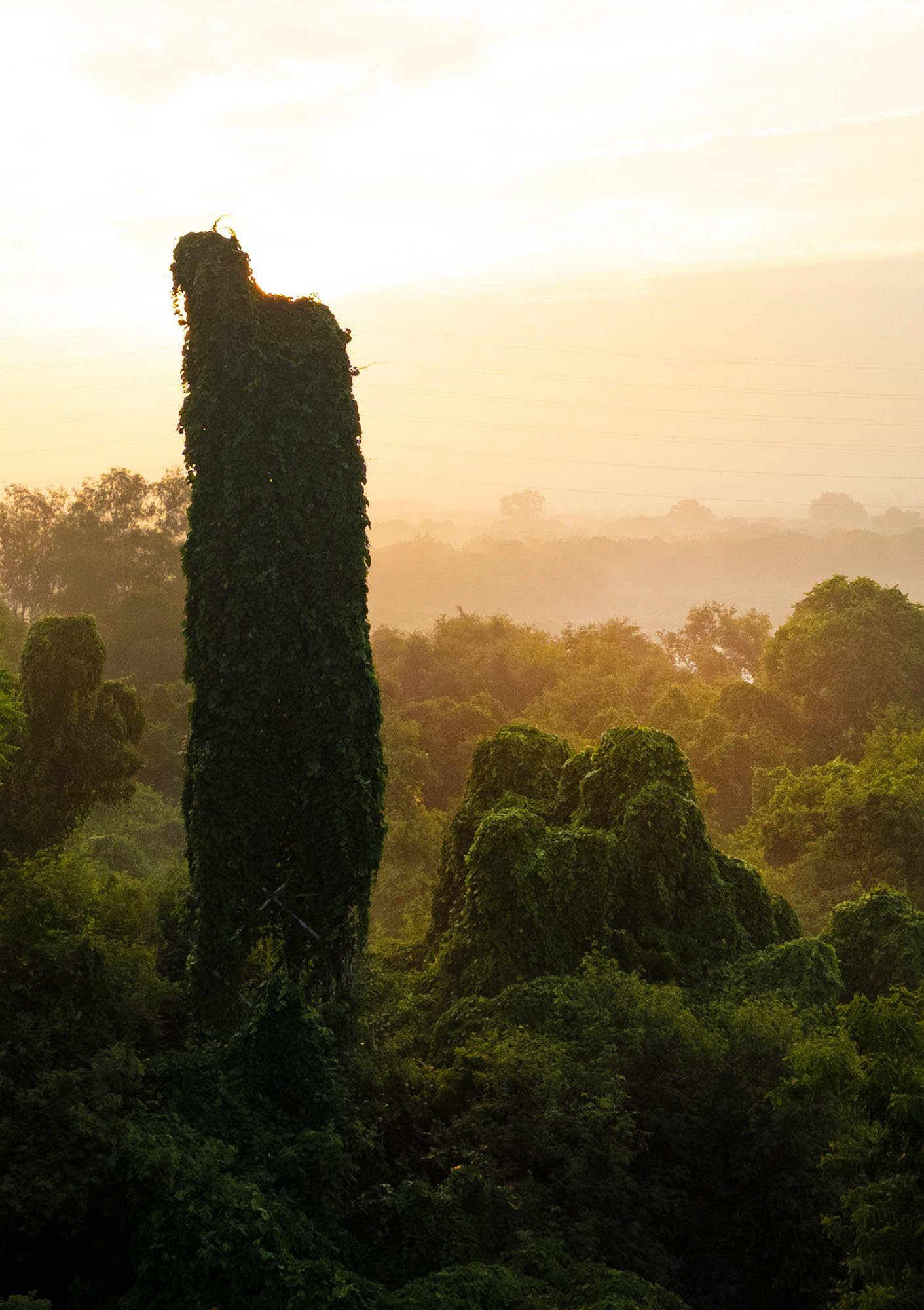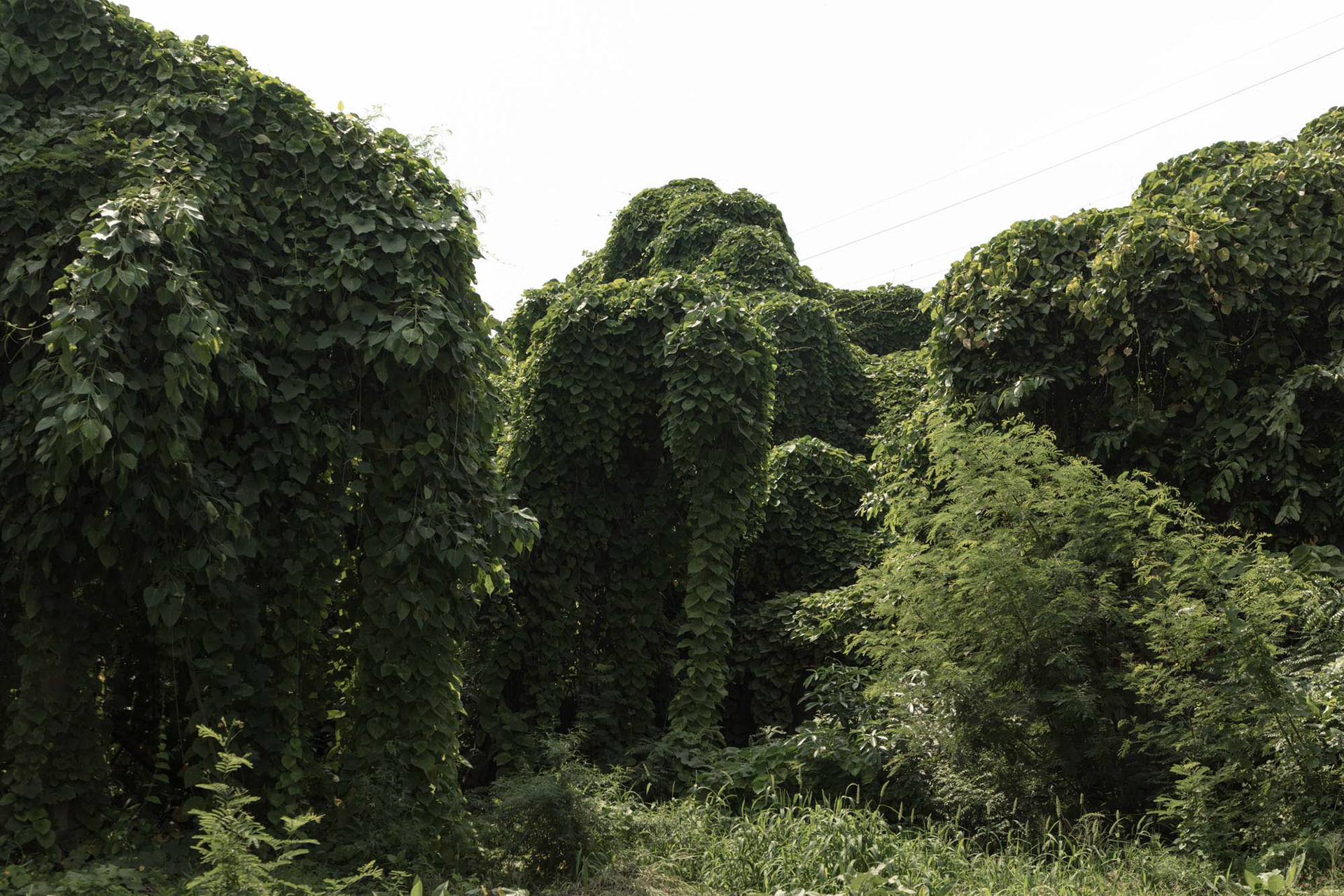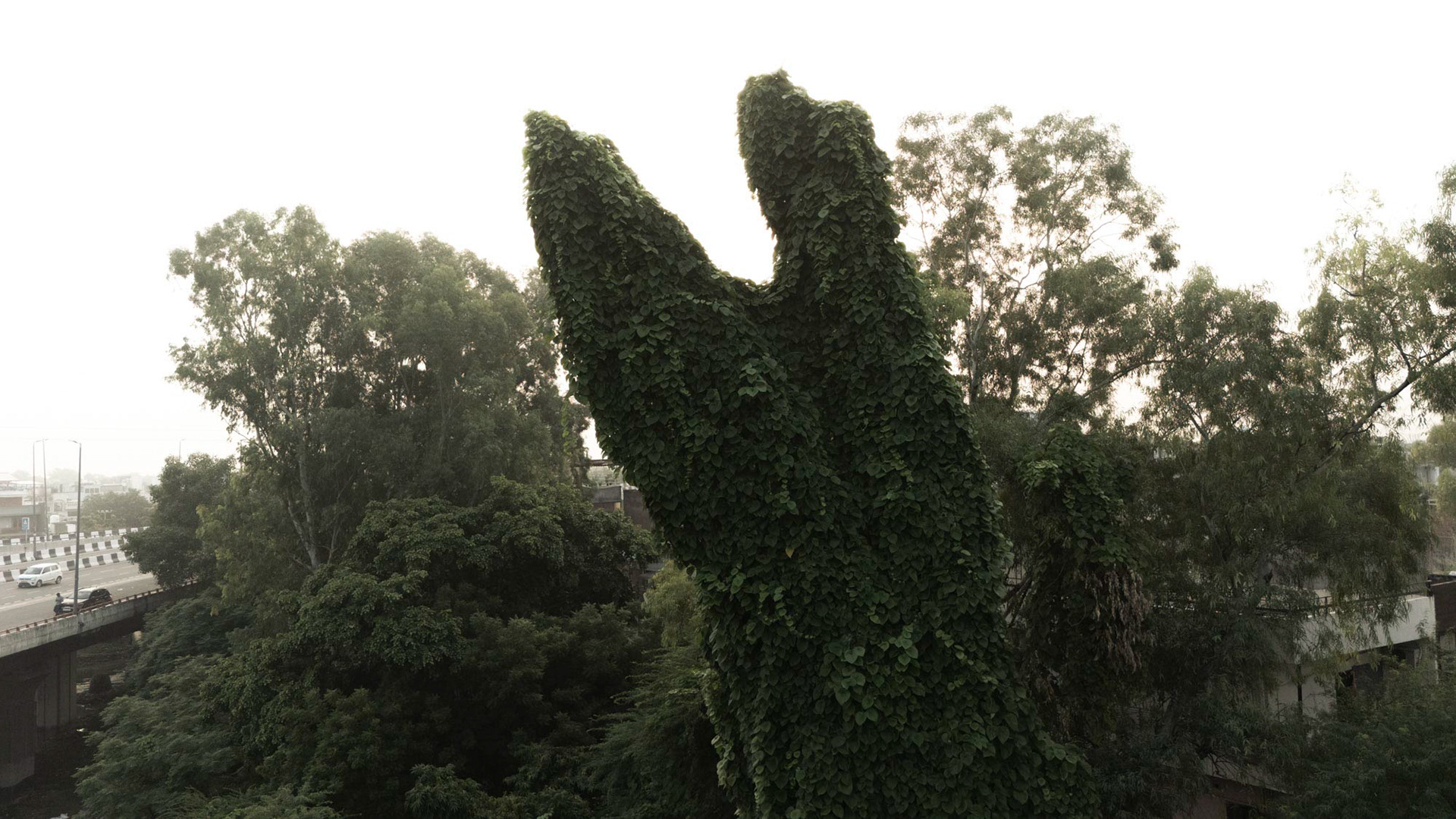



















Delhi is an ancient city layered with urban history. Having been rebuilt seven times by various kings, each has left their mark in the form of. monuments that testify to their dynasties. Amidst these enduring landmarks, every monsoon, the city experiences a silent invasion that recedes with the end of the season, only to return the following year. Climbing over derelict poles, signal towers, tall trees, and whatever else it can latch onto, Giloy—a local Indian creeper—takes over New Delhi. With the first rains, these tendrils emerge, often manifesting as amorphous ghouls and decrepit silhouettes that obscure the skyline. They envelop urban structures, stripping them of definition and blurring the lines between the natural and the man-made. In this way, a unique temporal reality of Delhi is created. I wanted to photograph these forms for two reasons. At first glance, their nightmarish shapes and relentless growth evoke fear, as if they might consume everything in their path. However, as I spent the monsoon observing these “monsters,” my fear transformed into curiosity. I found myself pondering the original structures entangled in their grasp, sacrificed to the whims of the season. Whether trees or infrastructure, it became evident that some aspects of our environment are beyond our control. Mons-Terra, deriving from the Latin word mons, (an area of the body higher than neighboring areas), and terra referring to ‘of earth’, seemed like the appropriate nomenclature for these temporal monsters that rise from the earth.